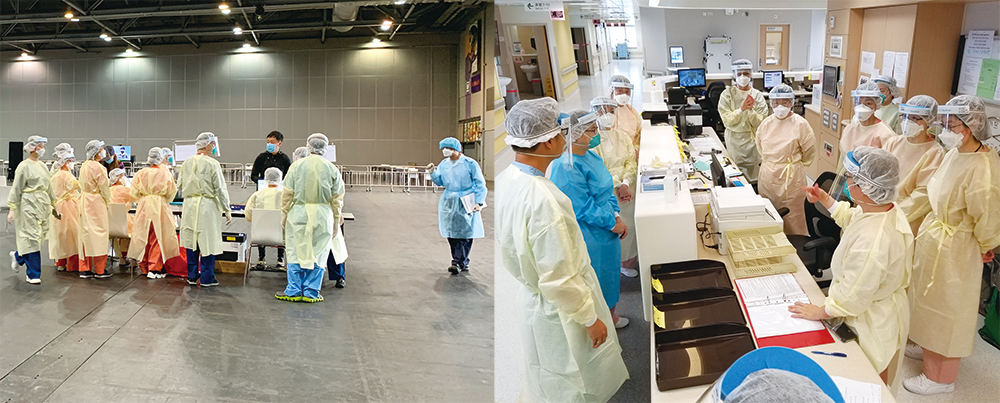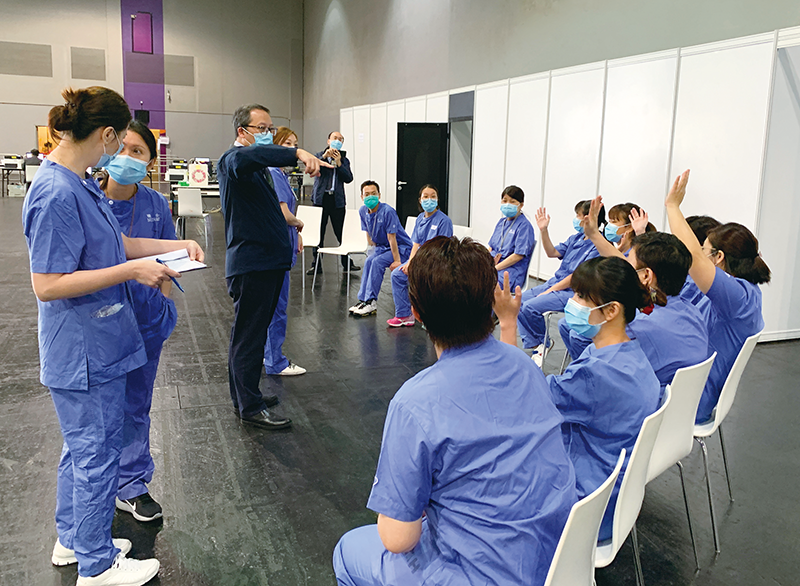Tackle at source, safeguard our society
Early detection of confirmed cases is vital to mitigate the risk of an outbreak in the community and hospital. HA has therefore implemented Enhanced Laboratory Surveillance Programme to tackle the virus at source through ‘early notification’, ‘early isolation’ and ‘early treatment’. As of 26 May, more than 220,000 COVID-19 tests have been performed, which means that 29.6 persons in every 1,000 persons have been screened.
Dr Vivien Chuang, Chief Manager (Infection, Emergency & Contingency) states that COVID-19 is escalating at a rapid pace. “In the initial stage when several clusters of local infection took place, we focused on breaking the transmission chain through early identification and hence contained local infection. The programme was launched to strengthen testing on suspected cases, and was gradually extended to cover all pneumonia inpatients and out-patients attending Accident and Emergency (A&E) Departments and General Out-patient Clinics. Since mid-May, the programme has been further extended to include inpatients with any respiratory symptoms; and patients in vulnerable groups, including institutional residents who are admitted to hospitals and patients admitted to psychiatric wards.“
In mid-March, the Hong Kong Government issued the Red Outbound Travel Alert on all overseas countries / territories. People flocked back to Hong Kong as COVID-19 was on the way up globally. Therefore, to manage the pandemic, HA swiftly extended the strategy to contain imported cases of infection. Two test centres were set up at AsiaWorld‑Expo (AWE) and North Lantau Hospital (NLTH) in just one day to provide testing for symptomatic inbound travellers starting from 20 March. Throughout the whole operation period, a total of around 1,410 cases have been tested in the centres, of which 7.3% are confirmed cases.
Overnight makeover at AWE and NLTH
Dr Larry Lee, Deputy Hospital Chief Executive of Tin Shui Wai Hospital and person in charge of test centre at AWE, states that, “It was a new experience to collect clinical specimens outside hospitals. The biggest challenge is to make decisions shortly with other nurses and staff from the Infection Control Team. Gladly, our unwavering trust in each other has achieved seamless collaboration to smoothen the tests procedures. At first, we also had a crippling shortage of doctors. It was very heart‑warming that many colleagues from A&E Department came to help without hesitation as they were aware that the hospital might be overloaded.”
NLTH specifically took in inbound travellers with medical needs. Staff spent only five hours to transform Ward A6, which was usually used for storage and rehabilitation services, into a station for 24 patients. Dr Michael Wong, Deputy Hospital Chief Executive of NLTH says, “We didn’t have a lot of instructions, but thanks to our experienced colleagues’ hard work, we managed to tackle all problems such as deployment of resources, workflow and material support. Normally, it would take months to set up a medical ward. But our accomplishment this time was almost like a miracle to me!”
Enhanced Laboratory Surveillance Programme facilitates early detection, isolation and treatment of patient. The risk of community outbreak is thereby minimised by effectively breaking a number of transmission chains.
COVID-19 wreaks havoc across the world
Changes in the landscape of care
An uphill battle


